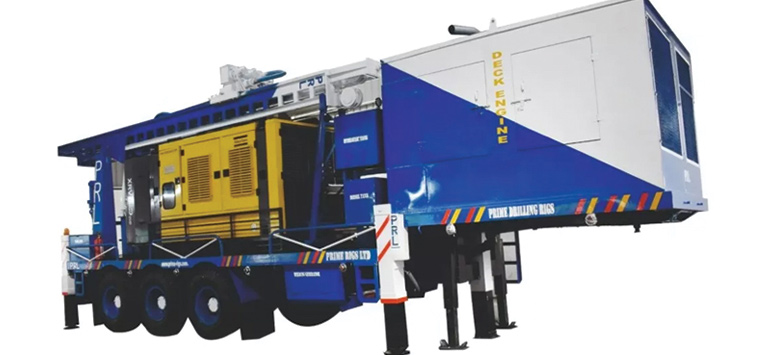
Humans have continuously sought development and evolution, from the very first innovations of wheels and arrows to the newest huge advances like spaceships and micro-sized brain controller chips. Also, even if they didn’t recognize it at the time, drills have never been an exception. Homo sapiens learned that holes might be made using rotating movements and pressure as early as the Stone Age. However, the first functional drill wasn’t created until much later.
However, the first drills date back to 3,500 B.C. Some reports place the invention of the first drill suppliers specifically designed for drilling through stones considerably further back in history. Power packs didn’t always look like the modern versions that fit in the palm of your hand and include a pistol grip and a trigger. From their beginnings in ancient Egypt to their current place at the center of American technology, drills have undergone many iterations in terms of their strength, form, and size.
Ancient To Modern
However, while today’s electric drills may seem like a recent innovation, the history of the earliest primitive drill dates back to the Stone Age. Their cavemen forebears utilized sharp rocks to bore holes in various building materials throughout the Stone Age. The subsequent iteration of drills resembled sharp stones just slightly. A crossbar was used in conjunction with two branch forks to create the drill of the era. Quartz sand was used for both friction and to turn a drill made of deer horn or elder wood. Finally, holes in stone could be drilled by dragging the instrument back and forth. When the Middle Ages rolled around, a new step in the evolution of the drilling technique suddenly became obvious. In the eleventh century, metal roller drills, drilling jigs, and racing spindles were invented.
These allowed for the drilling through of metals tin, copper, and iron. By the 15th century, the hand rig drillerhad been incorporated. Machines using cannon fire to bore holes have been around since 1550. These were employed to ensure maximum accuracy in firearm barrels. This form of the drill was improved upon by the Englishman John Wilkinson in 1774.
The Original Electric Drill
When it was realized that human muscle could be harnessed to produce mechanical energy, a watershed moment occurred in the evolution of power tools. The development of electric motors in 1834 made it possible to transform electrical energy into mechanical work. One of the most significant advances in technology history. It was a Melbourne, Australia, duo, Arthur Arnot and William Blanch Brain, who are considered the fathers of the electric drill.
Batteries
Several competing battery manufacturers have been vying for a place in the annals of cordless drills’ illustrious past. In 1961, Black & Decker released the first cordless drill, which was powered by a nickel-cadmium battery. Cadmium is a dangerous heavy metal, and these batteries must be disposed of specially. For more than 40 years, NiCd batteries were gradually phased out in favor of lithium-ion ones.
Conclusion
The drilling industry has a bright future because of the steady rate of development and change. Drills that can be operated via smartphone, dust-free drills, and drills that can be hooked to a drone to reach large depths are just a few of the unanticipated future innovations that could be implemented.
Recent Post
- Frequent Used: Heavy Construction Equipment and Instruments
- What Type of Water Drilling Should You Choose?
- How To Choose The Perfect Drilling Rig To Buy?
- Tips For Selecting the Right Drilling Rig According to Your Need
- Water Well Drilling: Numerous Advantages
- How To Find Affordable And Reliable Water Well Drilling Rigs For Sale?
- Everything You Need to Know About Water Construction Rigs
- Water Drilling Rigs: Know The Different Types
- Refurbished Borehole Drilling Machine: Is It Worth The Purchase?
- Safety for the Construction Industry: Why Does it Matter?
- Milling Or Drilling: Which Is The Right Process To Choose?
- Choosing A Construction Truck Rigs Supplier Keeping Perfection In Mind
- Factors That Can Help You Select The Best Water Well Drilling Rig
- What Makes Drilling Rigs Different From Milling Rigs?
- Water Well Drilling Rig: All You Need to Know About It
- Do’s and Don’ts of Choosing the Right Rigs
- Underground Drilling Rigs: Features That Make Them Unique And Most Recommended
- What are construction drilling rigs? Why do companies need them?
- How do drilling companies help you with core drilling exploration?
- Key Features and Benefits of Drilling Machines in the Construction Industry
- Exploring the Advantages of Portable Borewell Drilling Technology
- How to Choose the Right Drilling Rig for Your Needs
- Reasons to Invest in Absolute Guide for Rotary Drilling
- Selecting the Ideal Drilling Rig: Ensuring Safety, Efficiency and Cost-Effectiveness





